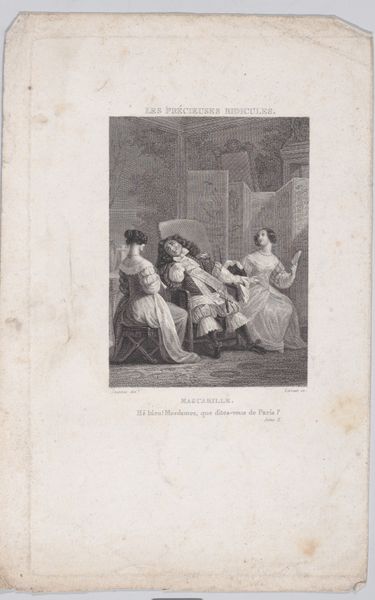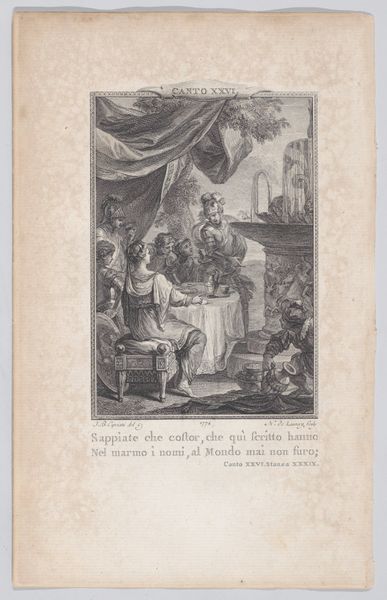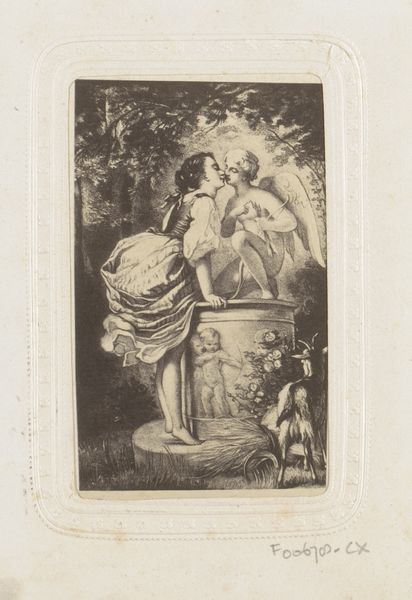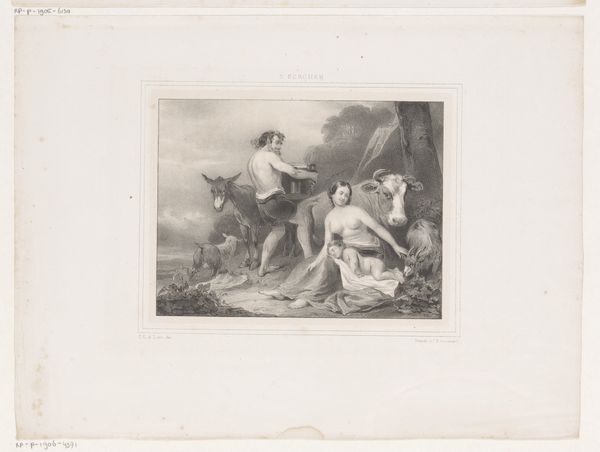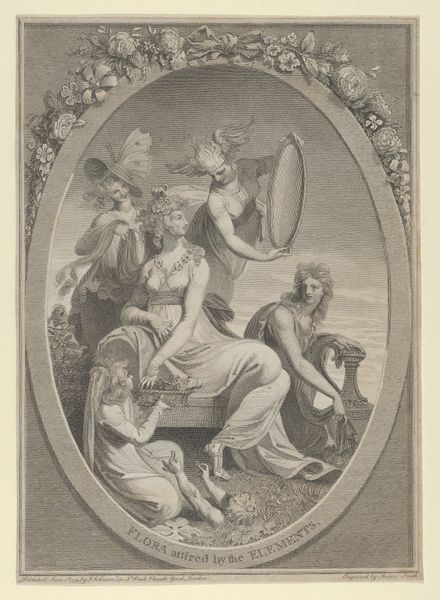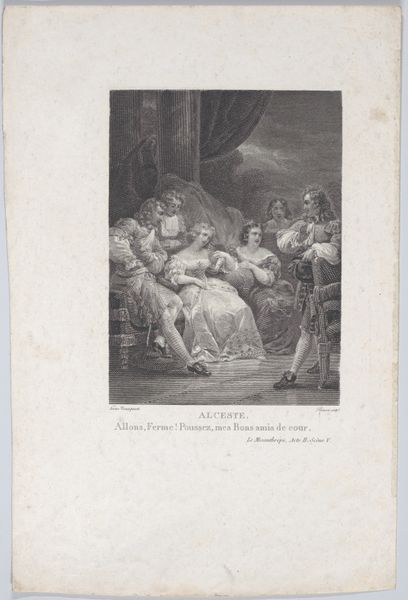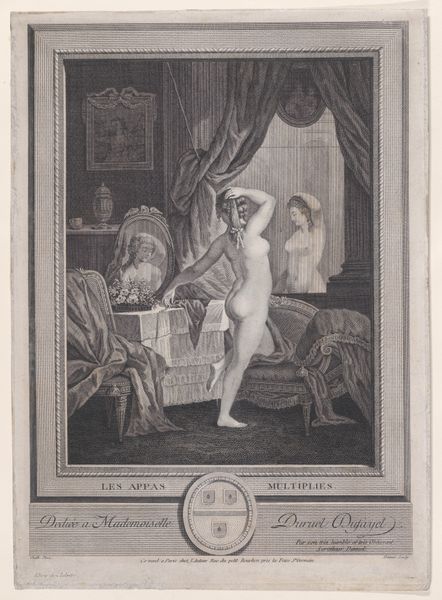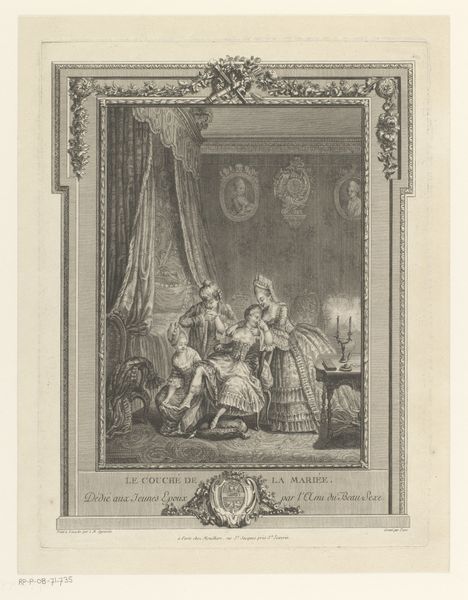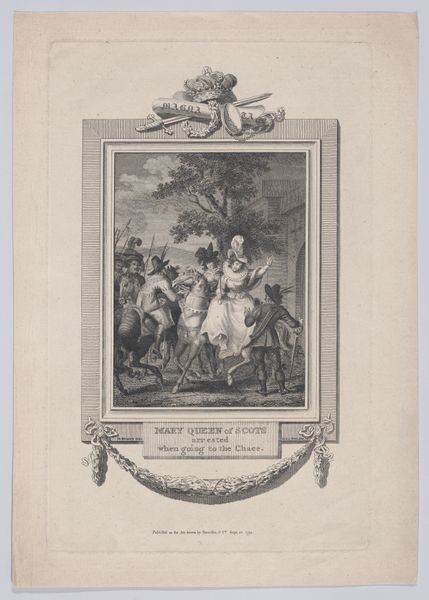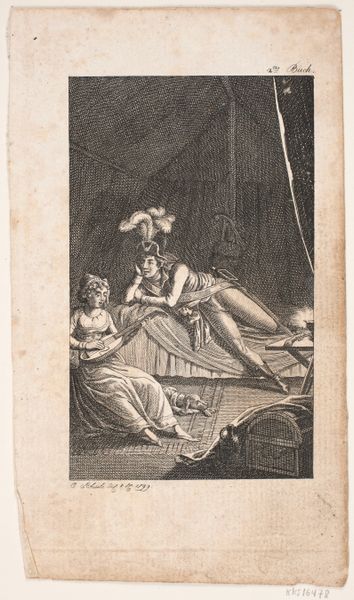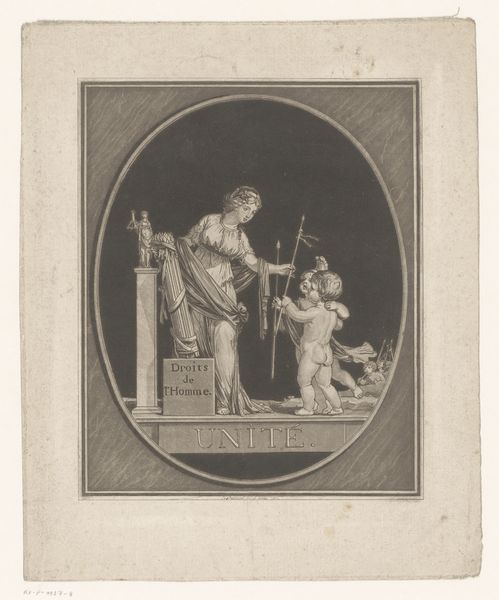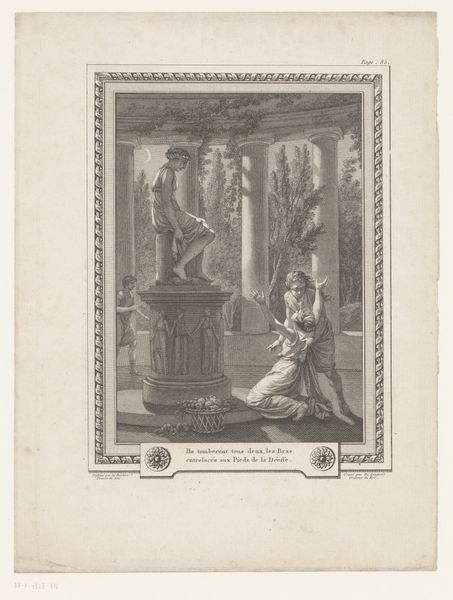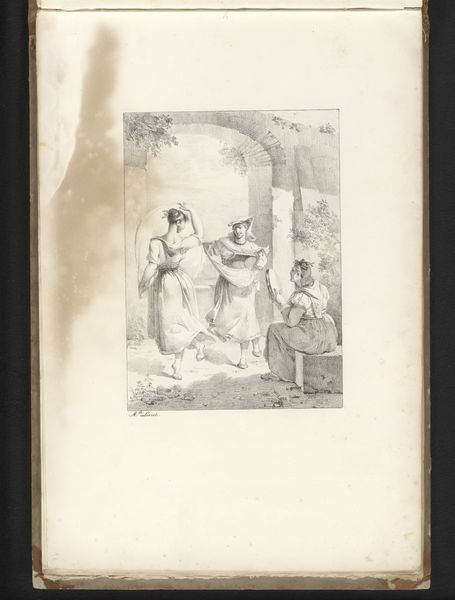
drawing, print, engraving
#
drawing
#
neoclacissism
#
allegory
# print
#
figuration
#
history-painting
#
engraving
Dimensions: Sheet: 14 5/8 × 10 9/16 in. (37.1 × 26.8 cm) Image: 8 1/16 × 6 5/16 in. (20.5 × 16 cm)
Copyright: Public Domain
Charles-Louis Constans created "The Curious Performance," a lithograph, in France sometime in the first half of the 19th century. Lithography is a printmaking technique that relies on the oily properties of limestone to repel ink from certain areas of the design. Here, the velvety blacks and subtly modulated grays are achieved through the careful application of ink to the smooth stone surface. The figures are rendered with a precision that mimics drawing, but the lithographic process allows for multiple impressions to be made, democratizing the image. This reproductive capability makes the artwork accessible to a wider audience, moving away from unique, handcrafted artworks. The amount of work involved in this production is immense, from quarrying the limestone to preparing the stone, creating the image, and finally, printing. Yet, this labor is somewhat obscured by the seeming ease of the final product. Paying attention to the materials and the methods of making allows us to consider how artistic practices are interwoven with broader social and economic forces.
Comments
No comments
Be the first to comment and join the conversation on the ultimate creative platform.
